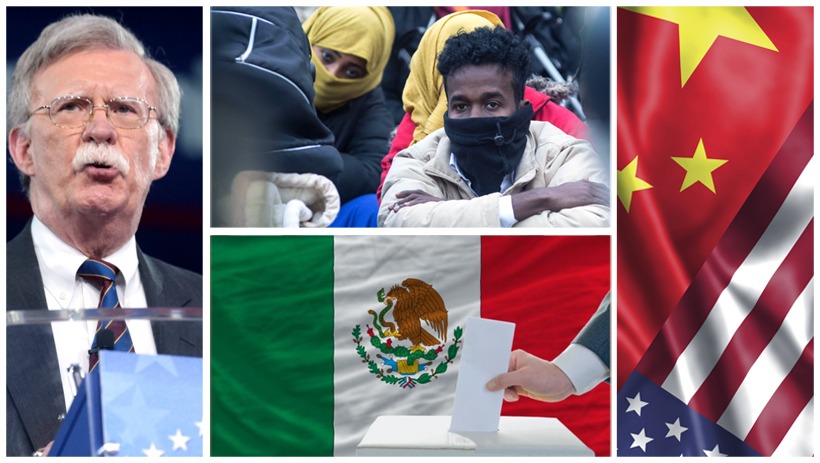By Mehmet Enes Beşer
China’s gaming sector has finally come of age. From a one-time fractured universe of PC cafés and pirated software to a globally competitive industry home to corporate titans Tencent and NetEase, China’s digital gaming revolution is at the same time eye-opening and instructive. It is the largest gaming market in the world by population and one of the largest in revenue terms. Yet, beneath the mind-boggling numbers lies a seething contradiction—between the aspiration to be number one in the world and the government’s stifling stranglehold on content, activity, and cultural messaging. In order for China’s gaming industry to transition from teen dominance to grown-up world supremacy, it must balance three intrinsic tensions: size and novelty, control and freedom, and home relevance and overseas popularity.
The numbers attest to stunning ascendancy. Through the first part of 2024, China had more than 660 million gamers—almost half its citizenry—and the industry generated over $66 billion in revenues. Mobile games are on the rise, with titles like Honor of Kings, Game for Peace, and Genshin Impact smacking tens of millions of players every day. China not only joined the global gaming conversation, but also reshaped it in many ways. Games are no longer something that is amused by in China; they are a major economic driver, soft power tool, and location of ideological conflict and identity politics.
But the industry’s explosive growth has ushered in intense regulatory scrutiny. In recent years, the Chinese government has enforced stricter licensing regimes, child online curfews, gaming expenditure limits, and more stringent content filters. Censorship of politically or morally disapproved stories, such as depictions of LGBTQ+ characters, “effeminate” male characters, or supernatural themes, has narrowed creative boundaries for game developers. While these interventions have been framed as guaranteeing youth development and social stability, they have also stifled innovation and reduced the tolerance for risk within studios.
The state’s rationale is not unfounded. Like other societies in modern times, China does have actual problems of gaming addiction, particularly among youth. But the sweep and inflexibility of regulatory steps have a tendency to overlook the subtlety and diversity of modern gaming behavior. Focusing on games as mere evils to youth morality and national cohesion, regulators could overlook their potential as potent tools of education, storytelling, and cultural diplomacy.
Among the contradictions of China’s gaming success is that much of its international influence has been a byproduct of its ability to overcome domestic constraints. Genshin Impact, developed by Shanghai-based miHoYo, was an international sensation precisely because it was not homed-in on a home market. Its anime-manga-inspired visuals, open-world structure, and multilingual, platform-agnostic strategy announced a developer with a global vision. Yet miHoYo’s success is the exception, not the norm. Most Chinese developers also still lack the balance of pleasing overseers at home and consumers abroad.
Also, difficult is the growing trend of depending on sequels, monetization strategies, and recycling existing content. When revenue growth was plateauing and the price of acquiring users had risen, especially in oversaturated urban markets, most studios had opted for more conservative development strategies. These yield short-term profits, but they always fail to yield landmark IP or global cultural sensitivity. In contrast, South Korea, Japan, and even small Western studios are still leaders in narrative breakthroughs, art styles, and subculture impacts—areas in which China lags behind due to the caution of creative personnel and ideological influence.
The second significant challenge is cultural credibility of games among Chinese. Regardless of their ubiquity, games remain distrusted in the minds of most—having been thought of as escapist, idle, or corrupting. This has been added to by state rhetoric describing gaming as a “spiritual opium.” To be meaningfully integrated into Chinese society, there must be a shift in public sentiment. Games must be viewed not merely as commodities but as works of culture, capable of carrying rich stories, identities, and values.
This is where China’s next leap must occur. If the initial Chinese generation was that of infrastructure and scale—servers, platforms, monetization—then the second generation has to be one of culture and narrative. Just as China wants to extend soft power through cinema, literature, and diplomacy, so too will it have to through games. Those games that involve Chinese mythology, history, or contemporary society—not spilling into propaganda—can be vehicles through which stories get told internationally. It would require not only funding and technological expertise, but also a tolerant and trusting culture among regulators.
In addition, China’s gaming giants must be ready to invest in tiny and medium-sized studios that are willing to get creative. Diversification encourages vibrant ecosystems. Indie developers can be hotbeds of innovation, and their games can defy convention in a way that larger, risk-averse companies cannot. Policy encouragement in the form of grants, relaxation of content control on experimental games, and transparent, explainable approval processes would go a long way in helping such a culture grow.
In addition, Chinese companies must refine their global strategies. Selling domestic blockbusters overseas is no longer sufficient. With growing tensions between nations and increased oversight of Chinese technology firms, foreign success will rest on greater cultural penetration, indigenous alliances, and deference to foreign mores. Genshin Impact’s success is a sign of what is possible, but more lasting global success will require a rethinking—especially in Western economies where narratives about data protection, surveillance, and ideology inform purchasing habits.
China’s gaming industry has grown out of its adolescence with remarkable efficiency, taking the lead in size, revenue, and infrastructure. Adolescence is not maturity, though. If China is to emerge as a global cultural leader in gaming, it must mature now—maturity defined by creative confidence, regulatory sophistication, and cultural sensitivity. That means loosening ideological shackles that suppress innovation, embracing games as legitimate forms of cultural expression, and telling stories that resonate across borders.
It also means going beyond zero-sum regulation and a more collaborative interaction between state, industry, and society. The next level will not be a success defined by profits or downloads alone, but by whether the industry is contributing meaningfully to China’s evolving identity—at home and abroad. That is, in short, what the next level is about is not how many people China’s games have; it’s what those games will say.

















Leave a Reply